- Home
- Terry Pratchett
The Science of Discworld I tsod-1 Page 21
The Science of Discworld I tsod-1 Read online
Page 21
What was the initial reaction to these two Earth-shattering articles? In his annual report for that year, the President of the Society, Thomas Bell, wrote that 'The year has not, indeed, been marked by any of those striking discoveries which at once revolutionize, so to speak, the department of science in which they occur.' However, this perception quickly changed as the sheer enormity of Darwin's and Wallace's theory began to sink in, and they took a lot of stick from Mustrum Ridcully's spiritual brethren for daring to come up with a plausible alternative to Biblical creation. What was this epoch-making alternative? An idea so simple that everybody else had missed it. Thomas Huxley is said to have remarked, on reading Origin: 'How extremely stupid not to have thought of that.'
This is the idea. You don't need a human being to push animals into new forms; they can do it to themselves, more precisely: to each other. This was the mechanism of natural selection. Herbert Spencer, who did the important journalistic job of interpreting Darwin's theory to the masses, coined the phrase, 'survival of the fittest' to describe it. The phrase had the advantage of convincing everybody that they understood what Darwin was saying, and it had the disadvantage of convincing everybody that they understood what Darwin was saying. It was a classic lie-to-children, and it deceives many critics of evolution to this day, causing them to aim at a long-disowned target, besides giving a spurious 'scientific' background to some extremely stupid and unpleasant political theories.
Starting from an enormous range of observations of many species of plants and animals, Darwin had become convinced that organisms could change of their own accord, so much so that they could even, over very long periods, change so much that they gave rise to new species.
Imagine a lot of creatures of the same species. They are in competition for resources, such as food, competing with each other, and with animals of other species. Now suppose that by random chance, one or more of these animals has offspring that are better at winning the competition. Then those animals are more likely to survive for long enough to produce the next generation, and the next generation is also better at winning. In contrast, if one or more of these animals has offspring that are worse at winning the competition, then those animals are less likely to produce a succeeding generation, and even if they somehow do, that next generation is still worse at winning. Qearly even a tiny advantage will, over many generations, lead to a population composed almost entirely of the new high-powered winners. In fact, the effect of any advantage grows like compound interest, so it doesn't take all that long. Natural selection sounds like a very straightforward idea, but words like 'competition' and 'win' are loaded. It's easy to get the wrong impression of just how subtle evolution must be. When a baby bird falls out of the nest and gets gobbled up by a passing cat, it is easy to see the battle for survival as being fought between bird and cat. But if that is the competition, then cats are clear winners, so why haven't birds evolved away altogether? Why aren't there just cats?
Because cats and birds long ago came, unwittingly, to a mutual accommodation in which both can survive. If birds could breed unchecked, there would soon be far too many birds for their food supply to support them. A female starling, for instance, lays about 16 eggs in her life. If they all survived, and this continued, the starling population would multiply by eight every generation, 16 babies for every two parents. Such 'exponential' growth is amazingly rapid: by the 70th generation a sphere the size of the solar system would be occupied entirely by starlings (instead of by pigeons, which appears to be its natural destiny).
The only 'growth rate' for the population that works is for each breeding pair of adult starlings to produce, on average, exactly one breeding pair of adult starlings. Replacement, but no more, and no less. Anything more than replacement, and the population explodes; anything less, and it eventually dies out. So of those 16 eggs, an average of 14 must not survive to breed. And that's where the cat comes in, along with all the other things that make it tough to be a bird, especially a young one. In a way, the cats are doing the birds a favour, collectively, though maybe not as individuals. (It depends if you're one of the two that survive to breed or the 14 that don't.)
Rather more obviously, the birds are doing the cats a favour, cat food literally drops out of the skies, manna from heaven. So what stops it getting out of hand is that if a group of greedy cats happens to evolve somewhere, they rapidly eat themselves out of existence again. The more restrained cats next door survive to breed, and quickly take over the vacated territory. So those cats that eat just enough birds to maintain their food supply will win a competition against the greedy cats. Cats and birds aren't competing because they're not playing the same game. The real competitions are between cats and other cats, and between birds and other birds. This may seem a wasteful process, but it isn't. A female starling has no trouble laying her 16 eggs. Life is reproductive, it makes reasonably close, though not exact, copies of itself, in quantity, and 'cheaply'. Evolution can easily 'try out' many different possibilities, and discard those that don't work. And that's an astonishingly effective way to home in on what does work.
As Huxley said, it's such an obvious idea. It caused so much trouble from religionists because it takes the gloss off one of their favourite arguments, the argument from design. Living creatures seem so perfectly put together that surely they must have been designed, and if so, there must have been a Designer. Darwinism made it clear that a process of random, purposeless variation trimmed by self-induced selection can achieve equally impressive results, so there can be the semblance of design without any Designer.
There are plenty of details to Darwinism that still aren't understood, as with all science, but most of the obvious ways of trying to shoot it down have been answered effectively. The classic example -still routinely trotted out by creationists and others even though Darwin himself had a pretty good answer, is the evolution of the eye. The human eye is a complex structure, and all of its components have to fit together to a high degree of accuracy, or it won't work. If we claim that such a complex structure has evolved, we must accept that it evolved gradually. It can't all have come into being at once. But if so, then at every stage along the evolutionary track the still-evolving proto-eye must offer some kind of survival advantage to the creature that possesses it. How can this happen? The question is often asked in the form 'What use is half an eye?', to which you are expected to conclude 'nothing', followed by a rapid conversion to some religion or other. 'Nothing' is a reasonable answer, but to the wrong question. There are lots of ways to get to an eye gradually that do not require it to be assembled piece by piece like a jigsaw puzzle. Evolution does not build creatures piece by piece like the God of Evolution in The Last Continent. Darwin himself pointed out that in creatures alive in his day you could find all kinds of light-sensitive organs, starting with patches of skin, then increasing in complexity, light-gathering power, and ability to detect fine detail, right up to structures as sophisticated as the human eye. There is a continuum of eyelike organs in the living world, and every creature gains an advantage by having its own type of light-sensing device, in comparison to similar creatures that have a slightly less effective device of a similar kind.
In 1994 Daniel Nilsson and Susanne Pelger used a computer to see what would happen to a mathematical model of a light-sensing surface if it was allowed to change in small, random, biologically feasible ways, with only those changes that improved its sensitivity to light being retained. They found that within 400,000 generations, an evolutionary blink of an eye, that flat surface gradually changed into a recognizable eye, complete with a lens. The lens even bent light differently in different places, just like our eye and unlike normal spectacle lenses. At every tiny step along the way, a creature with the improved 'eye' would be better than those with the old version.
At no stage was there ever 'half an eye'. There were just light-sensing things that got better at it.
Since the 1950s, we have been in possession of a new and cent
ral piece of the evolutionary jigsaw, one that Darwin would have given his right arm to know about. This is the physical, more precisely, chemical, nature of whatever it is that ensures that characteristics of organisms can change and be passed from one generation to the next.
You know the word: gene.
You know the molecule: DNA.
You even know how it works: DNA carries the genetic code, a kind of chemical 'blueprint' for an organism.
And, probably, a lot of what you know is lies-to-children.
Just as 'survival of the fittest' captured the imaginations of the Victorians, so 'DNA' has captured the imaginations of today's public. However, imaginations thrive best if they are left free to roam: they grow tired and feeble in captivity. Captive imaginations do breed quite effectively, because they are protected from the terrible predator known as Thought.
DNA has two striking properties, which play a significant role in the complex chemistry of life: it can encode information, and that information can be copied. (Other molecules process the DNA information, for example by making proteins according to recipes encoded in DNA.) From this point of view a living organism is a kind of molecular computer. Of course there's much more to life than that, but DNA is central to any discussion of life on Earth. DNA is life's most important molecular-level 'space elevator', a platform from which life can launch itself into higher realms.
The complexity of living creatures arises not because they are made from some special kind of matter- the now-discredited 'vitalist' theory, but because their matter is organized in an exceedingly intricate fashion. DNA does a lot of the routine 'bookkeeping' that keeps living creatures organized. Every cell of (nearly) every living organism contains its 'genome', a kind of code message written in DNA, which gives that organism a lot of hints about how to behave at the molecular level. (Exceptions are various viruses, on the boundary between life and non-life, which use a slightly different code.)
This is why it was possible to clone Dolly the Sheep, to take an ordinary cell from an adult sheep and make it grow into another sheep. The trick actually requires three adult sheep. First, there's the one from which you take the cell: call her 'Dolly's Mum'. Then you persuade the cell's nucleus to forget that it came from an adult and to think that it's back in the egg, and then you implant it into an egg from a second sheep ('Egg Donor'). Then you put the egg into the uterus of the third sheep ('Surrogate Mum') so that it can grow into a normal lamb.
Dolly is often said to be a perfect copy of Dolly's Mum, but that's not completely true. For a start, certain parts of Dolly's DNA come not from Dolly's Mum, but from Egg Donor. And even if that slight difference had been fixed, Dolly could still differ in many ways from her 'mother', because sheep DNA is not a complete list of instructions for 'how to build a sheep'. DNA is more like a recipe, and it assumes you already know how to set up your kitchen. So the recipe doesn't say 'put the mixture in a greased pan and place in an oven set to 400°F,' for instance: it says 'put the mixture in the oven' and assumes that you know it needs to go in a pan and that the oven should be set to a standard temperature. In particular, sheep DNA leaves out the vital instruction 'put the mixture inside a sheep', but that's the only place (as yet) where you can turn a fertilized sheep egg into a lamb. So even Surrogate Mum played a considerable role in determining what happened when the DNA recipe for Dolly was 'obeyed'.
Many biologists think that this is a minor objection, after all, Egg Donor and Surrogate Mum work the way they do because their DNA contains the information that makes them do it. But things that aren't in any organism's DNA may be essential for the reproductive cycle. A good example occurs in yeast, a plant that can turn sugar into alcohol and give off carbon dioxide. The entire DNA code for one species of yeast is now known. Thousands of experimentalists have played genetic games with yeast, then spun the beasties in a centrifuge to separate the DNA, from which they can work out the code. When you do this, you leave a scummy residue in the bottom of the test tube, but since it's not DNA, you know it can't be important for genetics, and you throw it away. And so they all did, until in 1997 one geneticist asked a stupid question. If it's not DNA, what's it for? What's in that scummy residue, anyway?
The answer was simple, and baffling. Prions. Lots and lots of them.
A prion is a smallish protein molecule that can act as a catalyst for the formation of more protein molecules just like itself. Unlike DNA, it doesn't do this by replication. Instead, it needs a supply of proteins that are almost like itself, but not quite, the right atoms, in the right order, but folded into the wrong shape. The prion attaches itself to such a protein, jiggles it around a bit, and nudges it into the same shape as the prion. So now you've got more prions, and the process speeds up.
Prions are molecular preachers: they make more of themselves by converting the heathen, not by splitting into identical twins. The most notorious prion is the one that is believed to be the cause of BSE, 'mad cow disease'. The protein that gets converted happens to be a key component of the cow's brain, which is why infected cows lose coordination, stagger around, foam at the mouth, and look crazy. What does yeast want prions for? Without prions, yeast can't reproduce. The protein-making instructions in its DNA sometimes make a protein that is folded into the wrong shape. When a yeast cell divides, it copies its DNA to each half, but it shares the prions (which can be topped up by converting other proteins). So here's a case where, even on the molecular level, an organism's DNA does not specify everything about that organism. There's a lot about the DNA code system that we don't understand, but one part that we do is the 'genetic code'. Some segments of DNA are recipes for proteins. In fact, they come very close to being exact blueprints for proteins, because they list the precise components of the protein and they list them in exactly the right order. Proteins are made from a catalogue of fairly tiny molecules known as amino acids. For most organisms, humans included, the catalogue contains exactly 22 amino acids. If you string lots of amino acids together in a row, and let them fold up into a relatively compact tangle, you get a protein. The one thing the DNA doesn't list is how to fold the resulting molecule up, but usually it folds the right way of its own accord. Occasionally, when it doesn't, there are more servant molecules to nudge it into the right shape. Just such a servant molecule, rejoicing in the name HSP90, is turning molecular genetics upside down even as we write. HSP90 'insists' that proteins fold into the orthodox shape, even if there are a few mutations in the DNA that codes for those proteins. When the organism is 'stressed', diverting HSP90 to other functions, these cryptic mutations suddenly get expressed, the proteins acquire the unorthodox shape that goes along with their mutated DNA codes. In effect, this says that you can trigger a genetic change by non-genetic means.
Segments of DNA that code for working proteins are called genes. Segments that don't rejoice in a variety of names. Some of them code for proteins that control when a given gene 'switches on', that is, starts to make proteins: these are known as regulatory (or homeotic) genes. Some bits are colloquially called 'junk DNA', a scientific term meaning 'we don't know what these bits are for'. Some literally minded scientists read this as 'they're not for anything', thereby getting the horse of nature neatly aligned with the rear end of the cart of human understanding. Most likely they are a mix of different things: DNA that used to have some function way back in evolution but currently does not (and might possibly be revived if, say, an ancient parasite reappeared), DNA that controls how genes switch their protein manufacturing on and off, DNA that controls those, and so on. Some may actually be genuine junk. And some (so the joke goes) may encode a message like 'It was me, I'm God, I existed all along, ha ha.'
Evolutionary processes do not always direct themselves along paths that are neatly comprehensible to humans. This doesn't mean Darwin was wrong: it means that even when he's right, there may be a surprising absence of narrativium, so that a 'story' that makes perfect sense to evolution may not make sense to humans. We suspect that
a lot of what you find in living organisms is like that -offering a small advantage at every stage of its evolution, but an advantage in such a complex game is that we can't tell a convincing story about why it's an advantage. To show just how bizarre evolutionary processes can be, even in comparatively simple circumstances, we must look not to animals or plants, but to electronic circuits.
Since 1993 an engineer named Adrian Thompson has been evolving circuits. The basic technique, known as 'genetic algorithms', is quite widely used in computer science. An algorithm is a specific program, or recipe, to solve a given problem. One way to find algorithms for really tough problems is to 'cross-breed' them and apply natural selection. By 'cross breed' we mean 'mix parts of one algorithm with parts of the other'. Biologists call this 'recombination' and each sexual organism, like you, recombines its parents' chromosomes in just this manner. Such a technique, or its result, is called a genetic algorithm. When the method works, it works brilliantly; its main disadvantage is that you can't always give a sensible explanation of how the resulting algorithm accomplishes whatever it does. More of that in a moment: first we must discuss the electronics.
Thompson wondered what would happen if you used the genetic algorithm approach on an electronic circuit. Decide on some task, randomly cross-breed circuits that might or might not solve it, keep the ones that do better than the rest, and repeat for as many generations as it takes.
Most electronic engineers, thinking about such a project, will quickly realize that it's silly to use genuine circuits. Instead, you can simulate the circuits on a computer (since you know exactly how a circuit behaves) and do the whole job more quickly and more cheaply in simulation. Thompson mistrusted this line of argument, though: maybe real circuits 'knew' something that a simulation would miss.

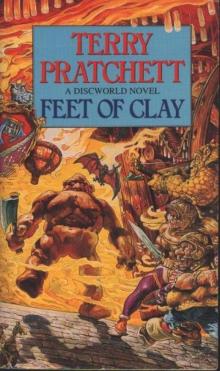 Feet of Clay
Feet of Clay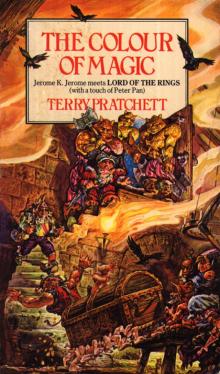 The Color of Magic
The Color of Magic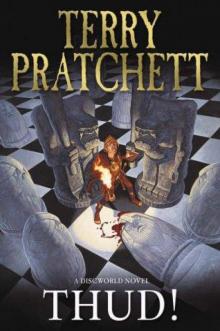 Thud!
Thud!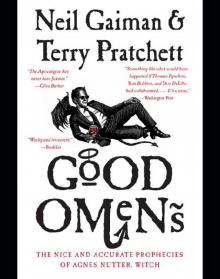 Good Omens: The Nice and Accurate Prophecies of Agnes Nutter, Witch
Good Omens: The Nice and Accurate Prophecies of Agnes Nutter, Witch I Shall Wear Midnight
I Shall Wear Midnight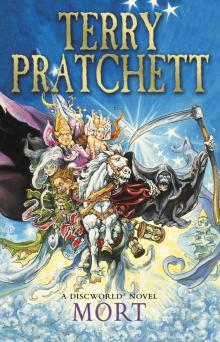 Mort
Mort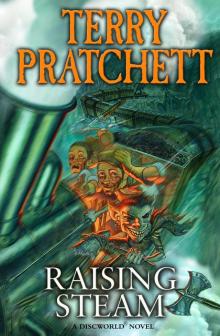 Raising Steam
Raising Steam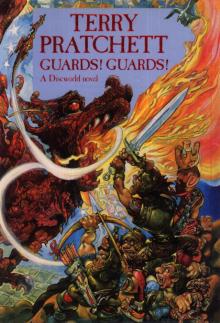 Guards! Guards!
Guards! Guards!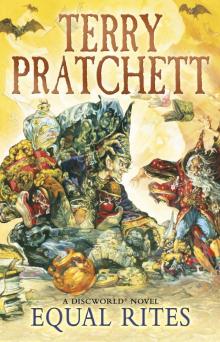 Equal Rites
Equal Rites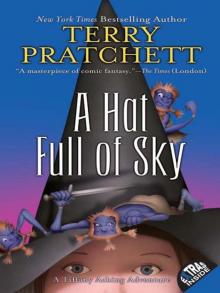 A Hat Full of Sky
A Hat Full of Sky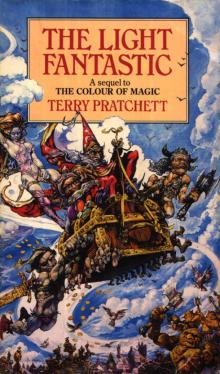 The Light Fantastic
The Light Fantastic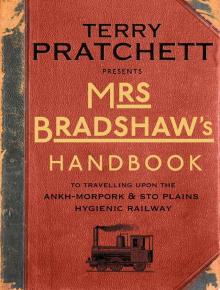 Mrs Bradshaw's Handbook
Mrs Bradshaw's Handbook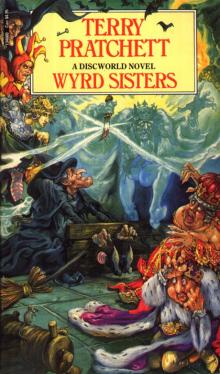 Wyrd Sisters
Wyrd Sisters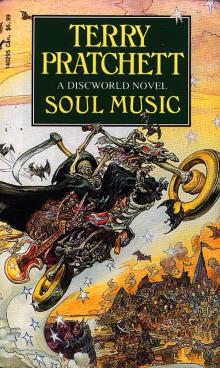 Soul Music
Soul Music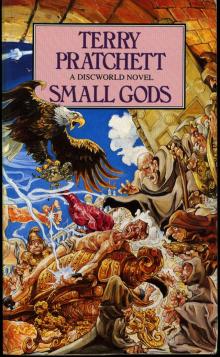 Small Gods
Small Gods Sourcery
Sourcery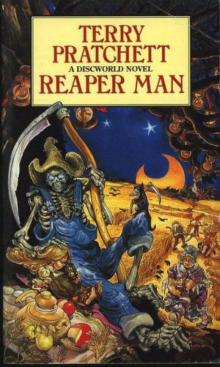 Reaper Man
Reaper Man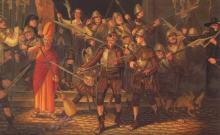 Night Watch
Night Watch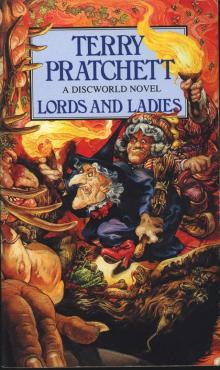 Lords and Ladies
Lords and Ladies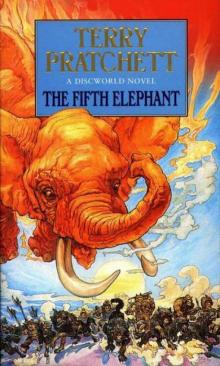 The Fifth Elephant
The Fifth Elephant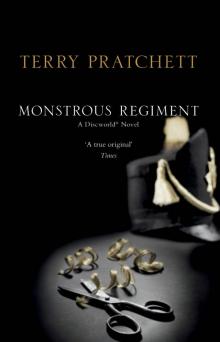 Monstrous Regiment
Monstrous Regiment The Truth
The Truth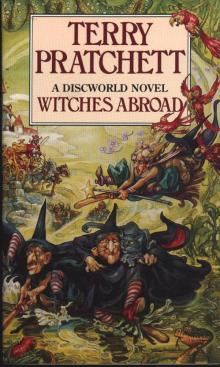 Witches Abroad
Witches Abroad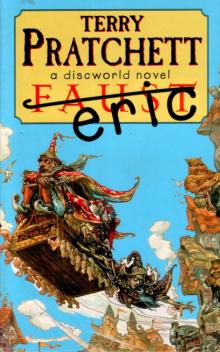 Eric
Eric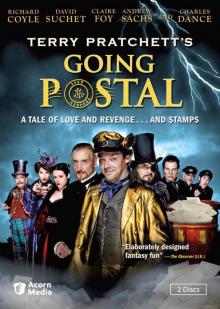 Going Postal
Going Postal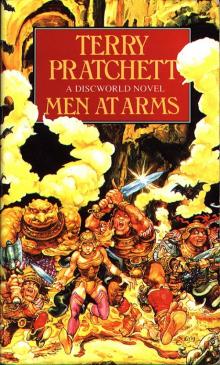 Men at Arms
Men at Arms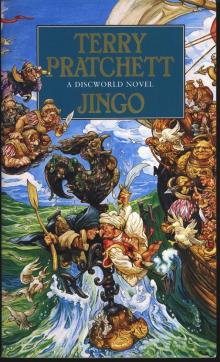 Jingo
Jingo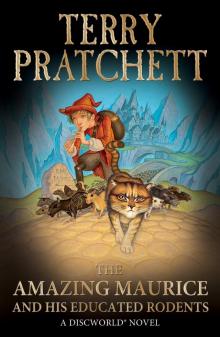 The Amazing Maurice and His Educated Rodents
The Amazing Maurice and His Educated Rodents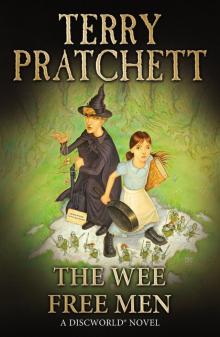 The Wee Free Men
The Wee Free Men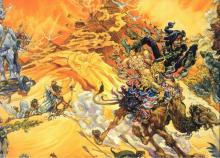 Pyramids
Pyramids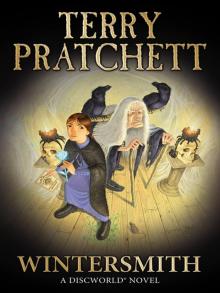 Wintersmith
Wintersmith Moving Pictures
Moving Pictures Carpe Jugulum
Carpe Jugulum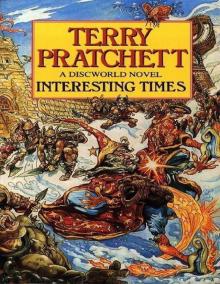 Interesting Times
Interesting Times Maskerade
Maskerade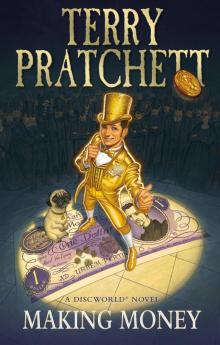 Making Money
Making Money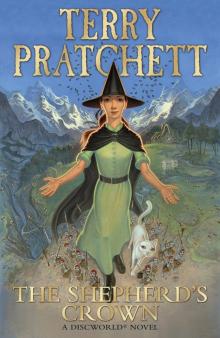 The Shepherd's Crown
The Shepherd's Crown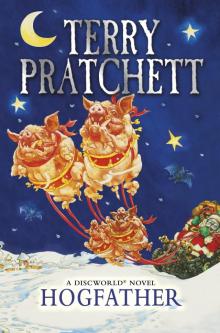 Hogfather
Hogfather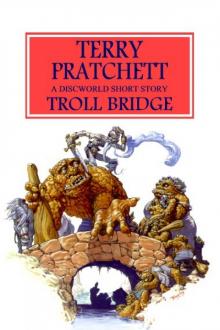 Troll Bridge
Troll Bridge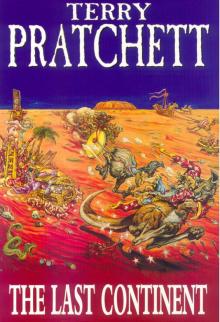 The Last Continent
The Last Continent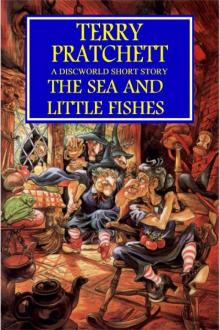 The Sea and Little Fishes
The Sea and Little Fishes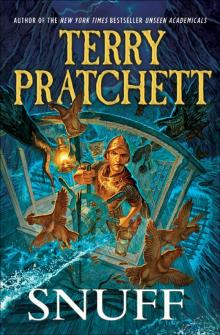 Snuff
Snuff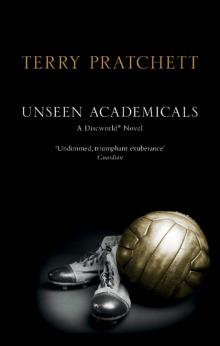 Unseen Academicals
Unseen Academicals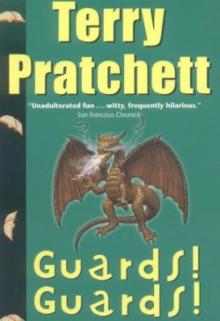 Guards! Guards! tds-8
Guards! Guards! tds-8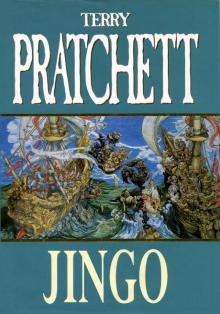 Jingo d-21
Jingo d-21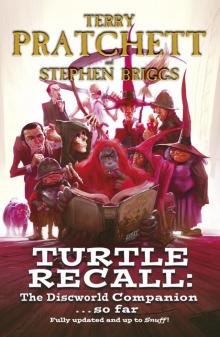 Turtle Recall: The Discworld Companion ... So Far
Turtle Recall: The Discworld Companion ... So Far The Fifth Elephant d-24
The Fifth Elephant d-24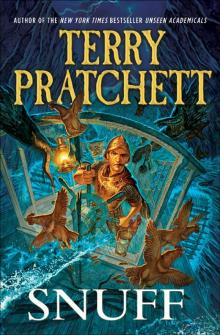 Discworld 39 - Snuff
Discworld 39 - Snuff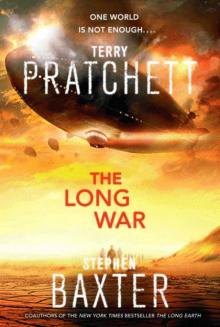 The Long War
The Long War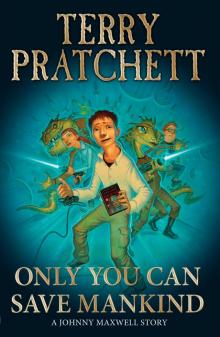 Only You Can Save Mankind
Only You Can Save Mankind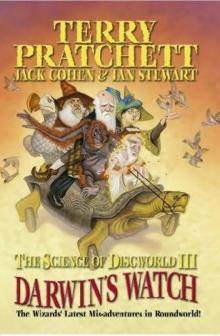 The Science of Discworld III - Darwin's Watch tsod-3
The Science of Discworld III - Darwin's Watch tsod-3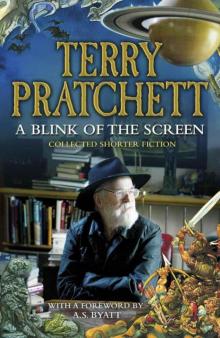 A Blink of the Screen: Collected Short Fiction
A Blink of the Screen: Collected Short Fiction Unseen Academicals d-37
Unseen Academicals d-37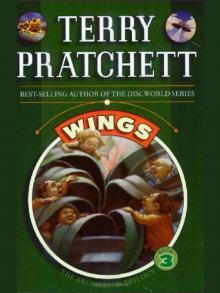 Wings
Wings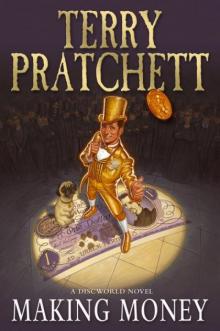 Making Money d-36
Making Money d-36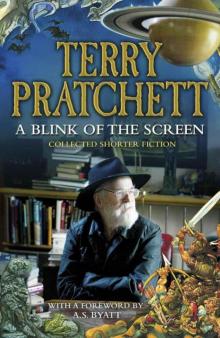 A Blink of the Screen
A Blink of the Screen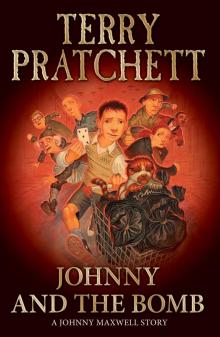 Johnny and the Bomb
Johnny and the Bomb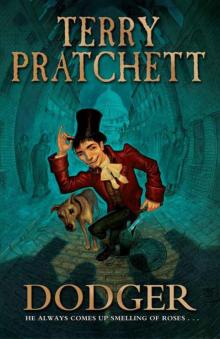 Dodger
Dodger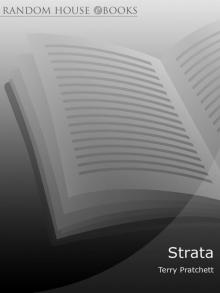 Strata
Strata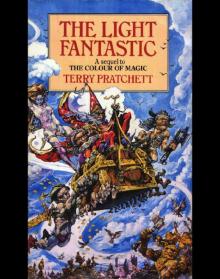 Discworld 02 - The Light Fantastic
Discworld 02 - The Light Fantastic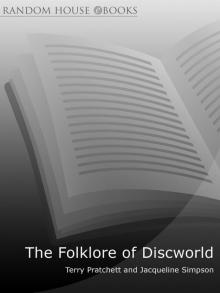 The Folklore of Discworld
The Folklore of Discworld The Science of Discworld
The Science of Discworld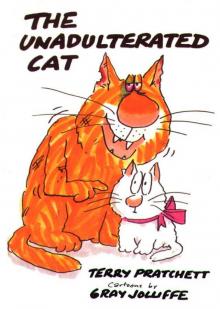 The Unadulterated Cat
The Unadulterated Cat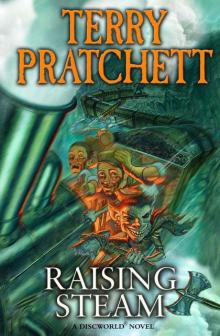 Raising Steam: (Discworld novel 40) (Discworld Novels)
Raising Steam: (Discworld novel 40) (Discworld Novels)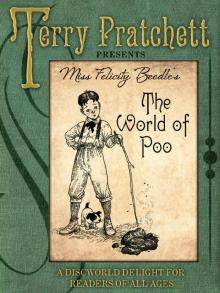 The World of Poo
The World of Poo Discworld 05 - Sourcery
Discworld 05 - Sourcery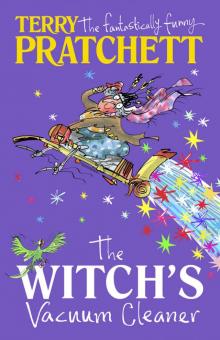 The Witch's Vacuum Cleaner: And Other Stories
The Witch's Vacuum Cleaner: And Other Stories The Science of Discworld II - The Globe tsod-2
The Science of Discworld II - The Globe tsod-2 Small Gods: Discworld Novel, A
Small Gods: Discworld Novel, A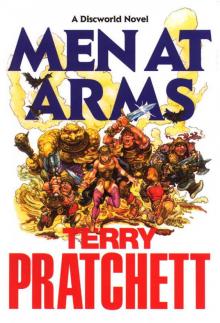 Men at Arms tds-15
Men at Arms tds-15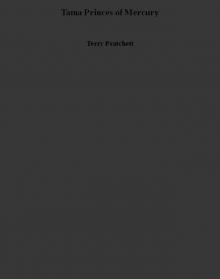 Tama Princes of Mercury
Tama Princes of Mercury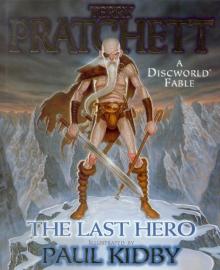 The Last Hero (the discworld series)
The Last Hero (the discworld series)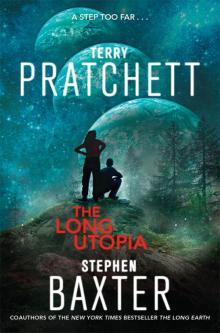 The Long Utopia
The Long Utopia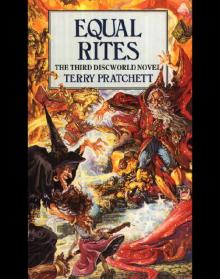 Discworld 03 - Equal Rites
Discworld 03 - Equal Rites Terry Pratchett - The Science of Discworld
Terry Pratchett - The Science of Discworld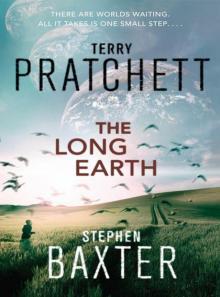 The Long Earth
The Long Earth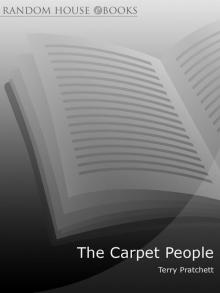 The Carpet People
The Carpet People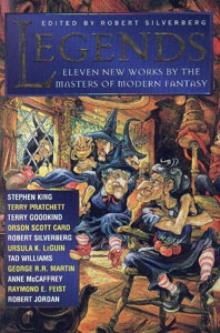 The Sea and Little Fishes (discworld)
The Sea and Little Fishes (discworld)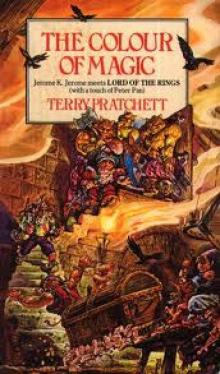 The Colour of Magic
The Colour of Magic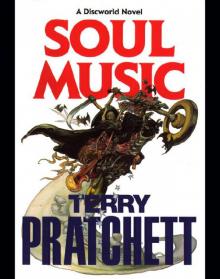 Discworld 16 - Soul Music
Discworld 16 - Soul Music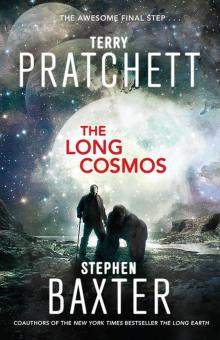 The Long Cosmos
The Long Cosmos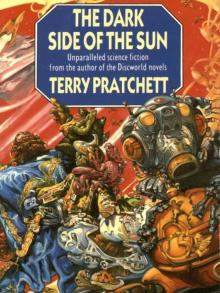 The Dark Side of the Sun
The Dark Side of the Sun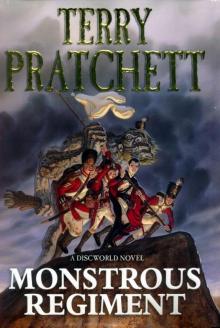 Monstrous Regiment tds-28
Monstrous Regiment tds-28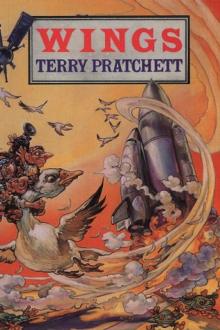 The Bromeliad 3 - Wings
The Bromeliad 3 - Wings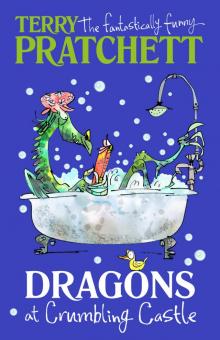 Dragons at Crumbling Castle: And Other Stories
Dragons at Crumbling Castle: And Other Stories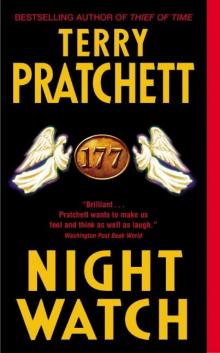 Night Watch tds-27
Night Watch tds-27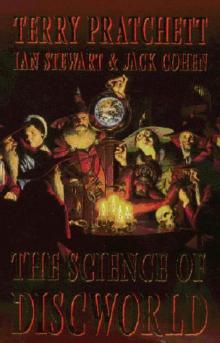 The Science of Discworld I tsod-1
The Science of Discworld I tsod-1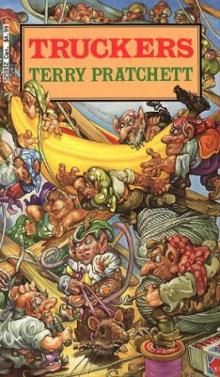 The Bromeliad 1 - Truckers
The Bromeliad 1 - Truckers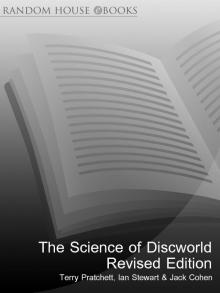 The Science of Discworld Revised Edition
The Science of Discworld Revised Edition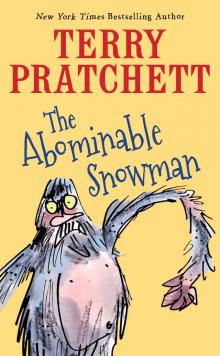 The Abominable Snowman
The Abominable Snowman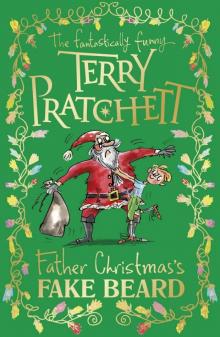 Father Christmas’s Fake Beard
Father Christmas’s Fake Beard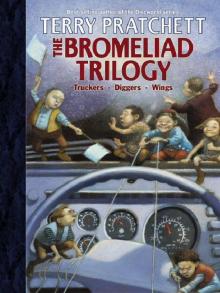 The Bromeliad Trilogy
The Bromeliad Trilogy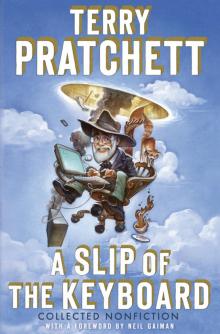 A Slip of the Keyboard
A Slip of the Keyboard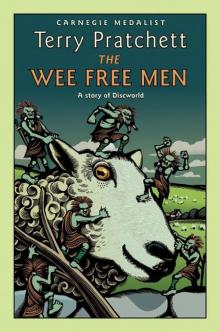 The Wee Free Men d(-2
The Wee Free Men d(-2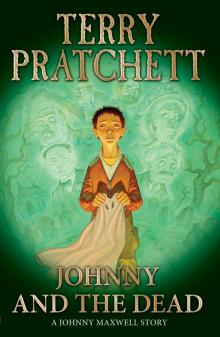 Johnny and the Dead
Johnny and the Dead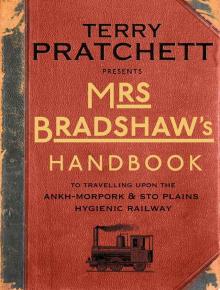 Mrs Bradshaw's Handbook (Discworld Novels)
Mrs Bradshaw's Handbook (Discworld Novels)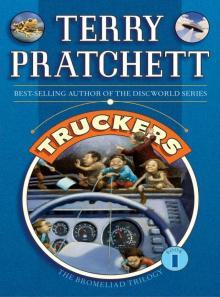 Truckers
Truckers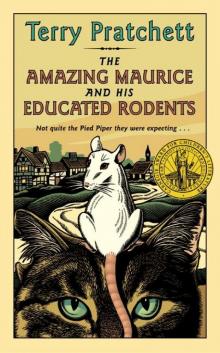 The Amazing Maurice and His Educated Rodents d(-1
The Amazing Maurice and His Educated Rodents d(-1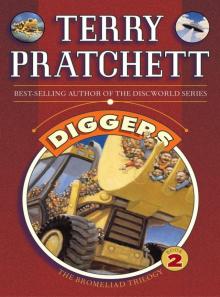 Diggers
Diggers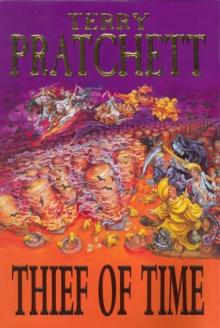 Thief of Time tds-26
Thief of Time tds-26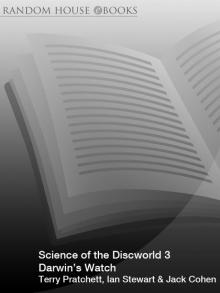 Science of Discworld III
Science of Discworld III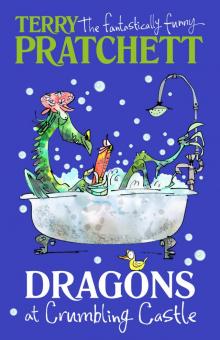 Dragons at Crumbling Castle
Dragons at Crumbling Castle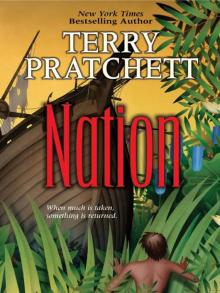 Nation
Nation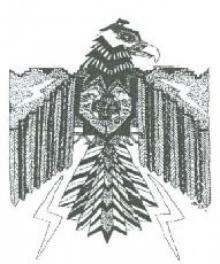 Darwin's Watch
Darwin's Watch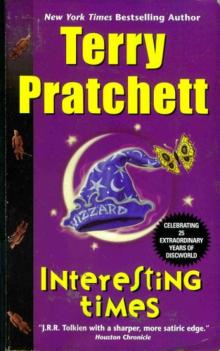 Interesting Times d-17
Interesting Times d-17 The Bromeliad 2 - Diggers
The Bromeliad 2 - Diggers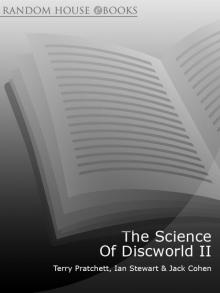 The Science of Discworld II
The Science of Discworld II